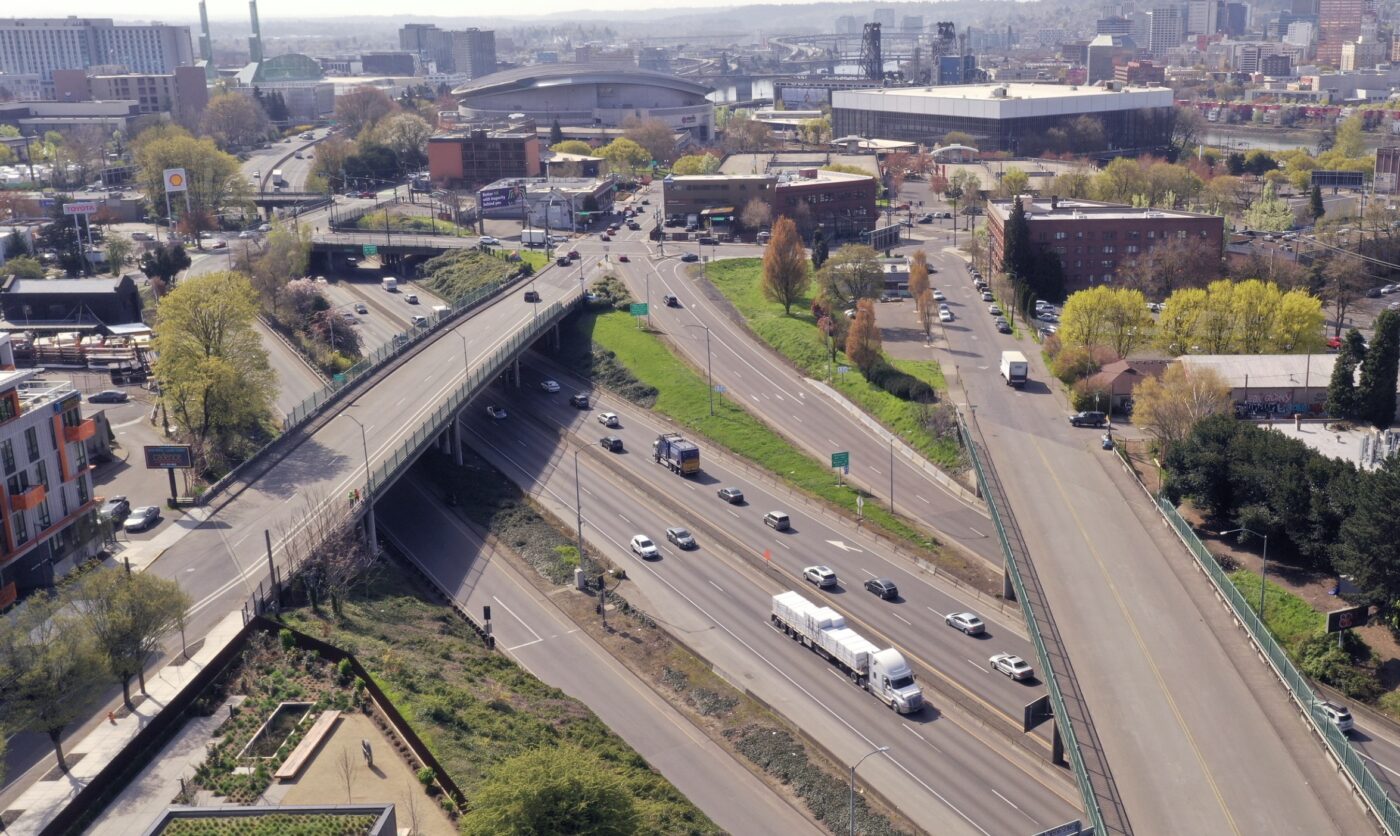“Given what we all know about our financial picture at this point, I’m not sure how we finance this project.”
– Lee Beyer, Oregon Transportation Commission member
It’s never a great sign for a transportation project when, six years after the legislature came up with a down payment, project leaders still don’t have a plan for how to pay for it.
After being dogged by years of negative headlines, high-profile protests, and shaky support from politicians and key public agencies, the I-5 Rose Quarter project seemed to take yet another step backwards today. The estimated $1.3 billion project seeks to add lanes to I-5 between I-84 and the Fremont Bridge and build a cap over the freeway where it crosses through the Lloyd near Moda Center. At the Oregon Transportation Committee meeting today, the director of ODOT’s Urban Mobility Office (a new department tasked with getting this and other freeway expansions in the Portland region built) Brendan Finn asked commissioners for a big favor: He requested a one-year extension on coming up with a financing plan for the project.
Finn and his team were supposed to present a funding scenario to the OTC by July of this year. But he says he needs more time. According to Finn, there are two man reasons a funding plan has proven elusive: First, the design of the project has changed dramatically since it was first conceived; and second, a recent moratorium on tolls has taken away one of the project’s main revenue sources. Finn didn’t mention at the meeting today that the estimated cost of the project has tripled since it was first endorsed and funded by the legislature.
When ODOT pitched the project to the legislature in 2017, it was all about congestion relief and “fixing the bottleneck.” Rural lawmakers said this section of I-5 was making it harder for their farmers to get goods to market and we heard the usual hue and cry about traffic backups. But once ODOT got into the local politics, they realized that it’s very tough to add driving capacity on a freeway in Portland’s central city — a place filled with politicians and activists who are proud of our freeway fighting legacy and who understand the terrible policy implications of freeway widening. So ODOT tried to shift to making the project about safety. But when called out on that rationale, they could not show a compelling crash and fatality history that would necessitate such an immense cost. Then the project became all about re-invigorating the lower Albina neighborhood (that the original freeway construction wiped out). But smart people realize it’s much easier and cheaper to rebuild lower Albina without expanding the freeway.
When you combine a shaky rationale with an even shakier political footing and what seems like one controversy after another, you get a project that is in a lot of trouble.
The OTC ultimately granted Finn’s request for a delay today, but not without some tough love from the commissioners.
Commissioner Sharon Smith pointed out that, “The longer these projects take, the more they cost and so delay is not always our friend. And especially with escalating costs and impacts it’s just, it’s hard to do because it’s just going to cost us all more later.”
And Commissioner Lee Beyer (a former legislator who spearheaded the 2017 transportation funding package that committed $30 million per year to the project starting in 2022, money which was recently taken away from this project so ODOT could build a wider Abernethy/I-205 Bridge ) said, “It’s obviously been a controversial project.” Beyer says he understands the delays in the funding plan because of how much the project has changed since 2017 (freeway caps were a distant possibility then, but have become the most important — and expensive — part of the project since). “And so the need to develop the funding plan is important and it makes sense to take the time to do that,” he said at the meeting today. Then his next comment really made sit up straight:
“I have to say that given what we all know about our financial picture at this point, I’m not sure how we finance this project. I think it’s going to require some additional legislative action and commitment that we’re going to move forward on this… It’s a challenge financially. And so that’ll be something that I want to make sure from a fiduciary standpoint that we limit our financial exposure while still supporting the project until those finance decisions are made.”
So not only does ODOT have no plan to pay for the project, but the earmark the legislature gave them is being used on a different project, they can no longer count on tolling in the short term, and one of their bosses on the OTC just said he’s not even sure how the numbers will add up.
Meanwhile, while ODOT tries to fundraise for a freeway expansion, the prospects for a separate plan to rebuild the Albina neighborhood over I-5 have never looked better.
In March the nonprofit Albina Vision Trust won an $800,000 “Reconnecting Communities” grant from the Biden administration to jumpstart a planning process with the City of Portland that help solidify their vision. And late last month, Nike founder Phil Knight and his family foundation pledged $400 million to the 1803 Fund, a new group that will spearhead investments in the historically Black neighborhood. The fund will be headed by Rukaiyah Adams, one of the founding board members of Albina Vision Trust.
Funding a project that will make the neighborhood stronger seems to be much more popular than funding one that would do the opposite. Go figure.



